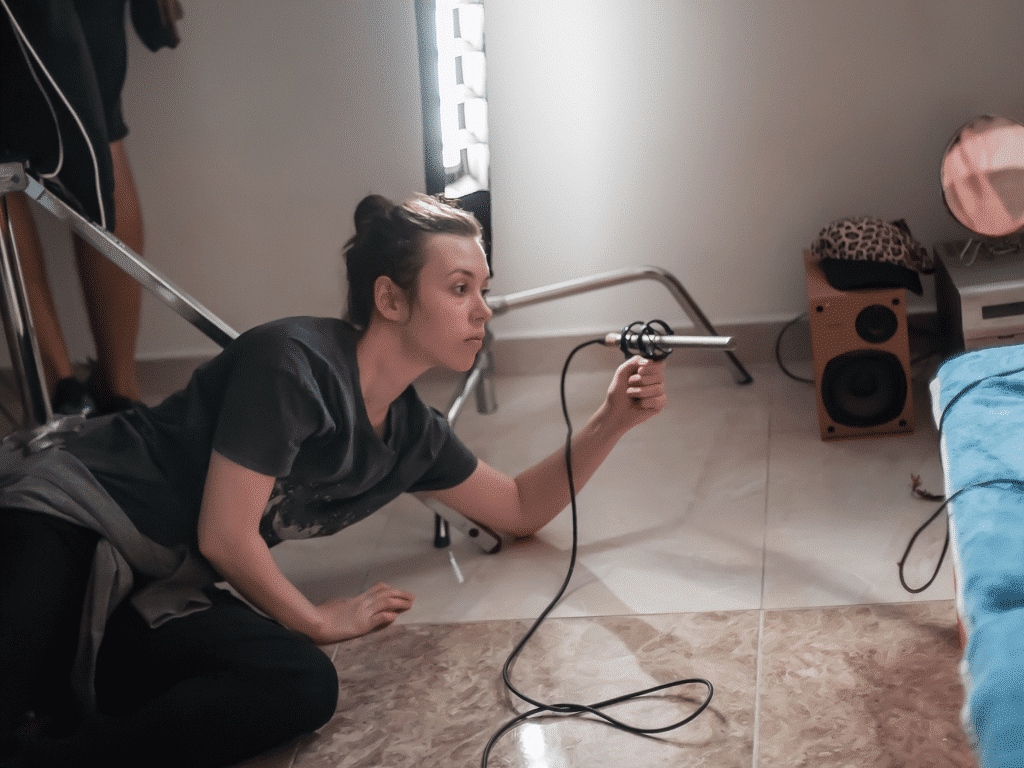The sound design and foley are two distinct yet related aspects of audio production for cinema, television, and video games. Sound design is the art of creating, manipulating, and recording sound for a production, ranging from recording sound effects and ambiences to creating soundscapes from scratch. Foley is the art of creating or recreating sound effects using various tools and techniques, often requiring a creative approach to capture the right feel for the scene. This blog post explores the basics of sound design and foley, as well as their importance in the production process. It covers what they are, how they are used, and what the differences are between them. The post also emphasizes the importance of having competent sound designers and foley artists on the production team, along with factors to consider when assembling a high-performing sound team.
1. The definition of sound design and foley
Sound design is a creative process that involves the use of sound elements to create sound environments for various purposes such as cinema, television, video games, and other digital media. It involves recording, editing, mixing, and manipulating sound, as well as creating sound effects.
Foley is a type of sound design that utilizes real objects and surfaces to create sound effects. It owes its name to its creator, Jack Foley, and is typically used to enhance originally recorded soundtracks without sound effects. Foley is often employed to create realistic sound effects, such as footsteps, opening and closing doors, and other everyday life sounds.
2. Differences between sound design and foley
Sound design and foley are two disciplines in the audio production world, but they are distinct from each other. The main difference between sound design and foley is that sound design focuses on creating original audio elements, while foley focuses on adding sound effects to existing audio elements. Sound design involves creating unique and original sounds, whether it’s the roar of a creature, an explosion, a synthesized sound effect, or any other element. In contrast, foley involves adding real-world sound effects to existing dialogue, music, and sound effects to make the sound more realistic and immersive.
3. Advantages of using sound design and foley in audio production
Sound design can be a valuable tool for audiovisual professionals. It is the process of creating and manipulating sounds to achieve the desired effect, which can be used to create an atmosphere and mood in any production. It can also be used to add a sense of realism to any scene, while sound effects can add an extra layer of tension and excitement to any production. The benefits of using sound design and sound effects include better production quality, a better sense of atmosphere, and a more immersive environment. Additionally, sound design and sound effects can contribute to creating a more dynamic and interesting experience for the audience.
4. Common techniques used in sound design and foley
In sound design, the main techniques used are synthesis, recording, editing, and mixing. Synthesis involves creating a sound from scratch using a synthesizer. Recording involves capturing the sound in its natural environment and modifying it to create the desired effect. Editing involves adjusting the pitch, length, and sound quality of an audio file. Finally, mixing involves combining these elements to achieve the desired sound.
In the field of foley, the most common techniques are recording, mixing, and editing foley. Foley recording involves capturing sound effects in a controlled environment to match the movements and actions of a character. Foley mixing involves placing the sound effects at a specific location in the stereo field. Foley editing involves adding sound effects to an already recorded soundtrack and adjusting the timing, frequency, and volume of the sound.
5. Examples of sound design and foley in media
The sound design and sound effects can be heard in a variety of media sources. In cinema and television, sound design is used to create a realistic atmosphere and amplify emotional moments. In video games, sound design is used to add an immersive element to the gaming experience. In the field of music, sound design is used to give a unique flavor to the piece and highlight the musical themes. In virtual reality, sound design is used to create an immersive and credible experience for the user. All of these examples demonstrate how sound design and sound effects can have a powerful effect on the media in which they are used.
In conclusion, sound design and foley are two important aspects of sound production. Sound design involves creating audio elements to enhance the atmosphere and emotion of a scene. Foley is the art of creating sound effects that are recorded for film and television. Both of these aspects are essential to creating a truly immersive audio experience, and can help to immerse viewers in the story.

